#Meriam Cooper
Text
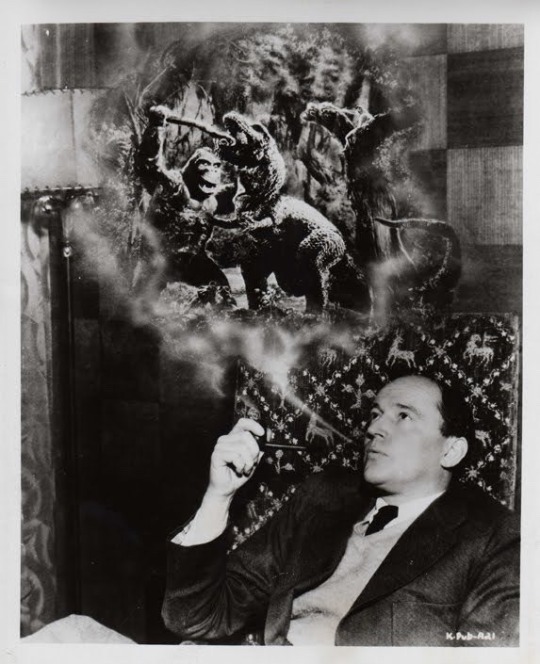
Quite possibly my favourite publicity photo ever, from 1933's King Kong.
#king kong#king kong 1933#meriam cooper#meriam c cooper#mypost#trent rambles#publicity photo#publicity#smoking#pipe
178 notes
·
View notes
Text
I haven’t read War Eagles but I do want to read it. Everything I’ve heard about it so far seems pretty good. Just going off of what I’ve heard about it, it could work as an animated movie in the same vein as Atlantis the Lost Empire.
0 notes
Photo

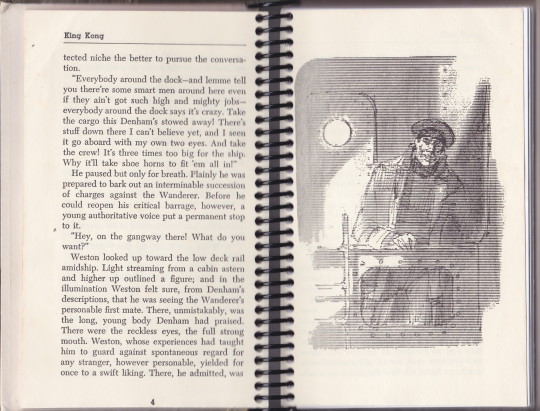
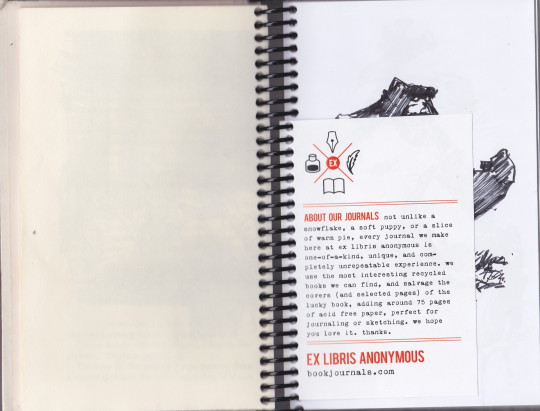
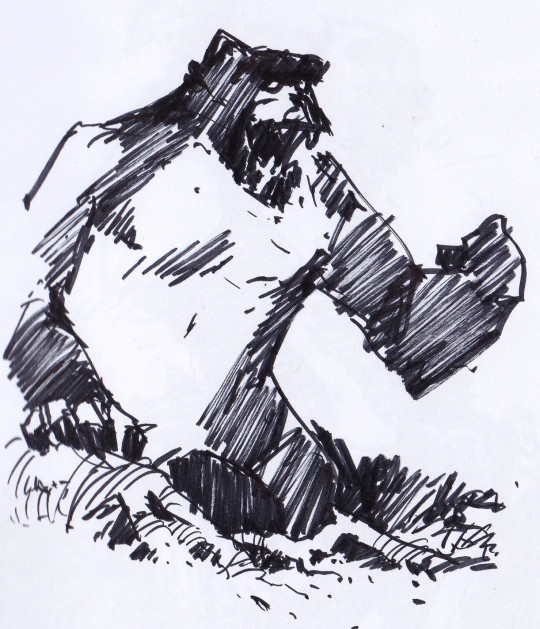
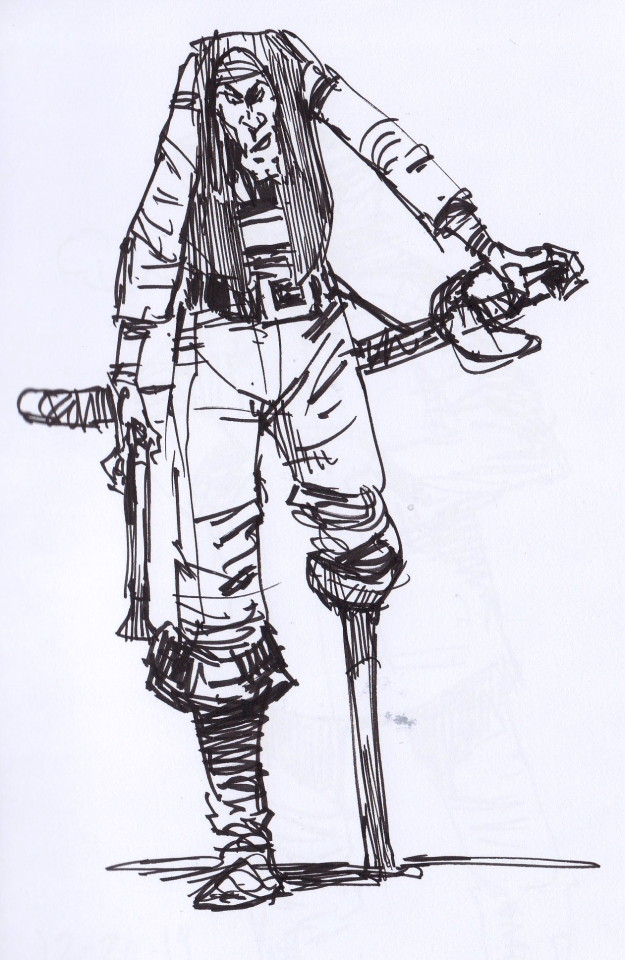
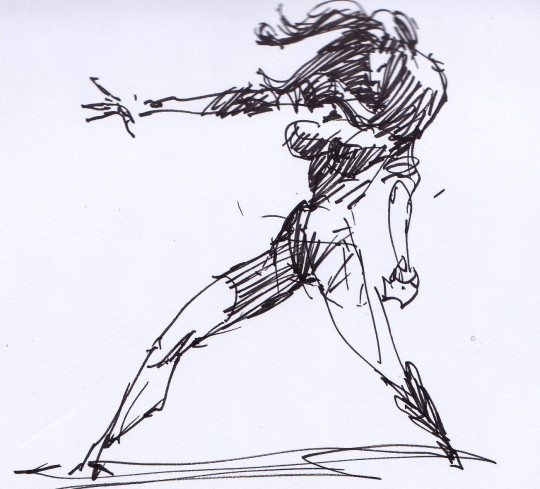
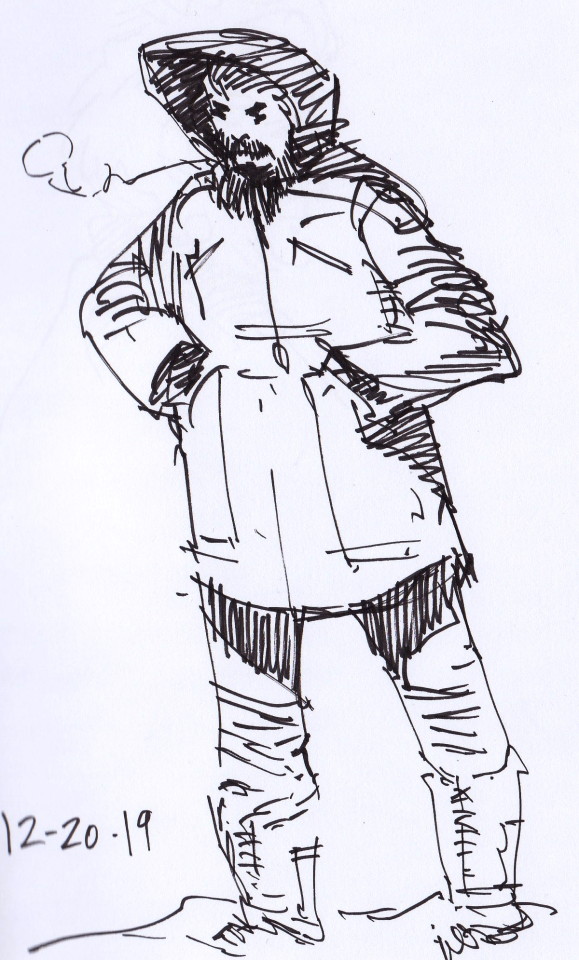
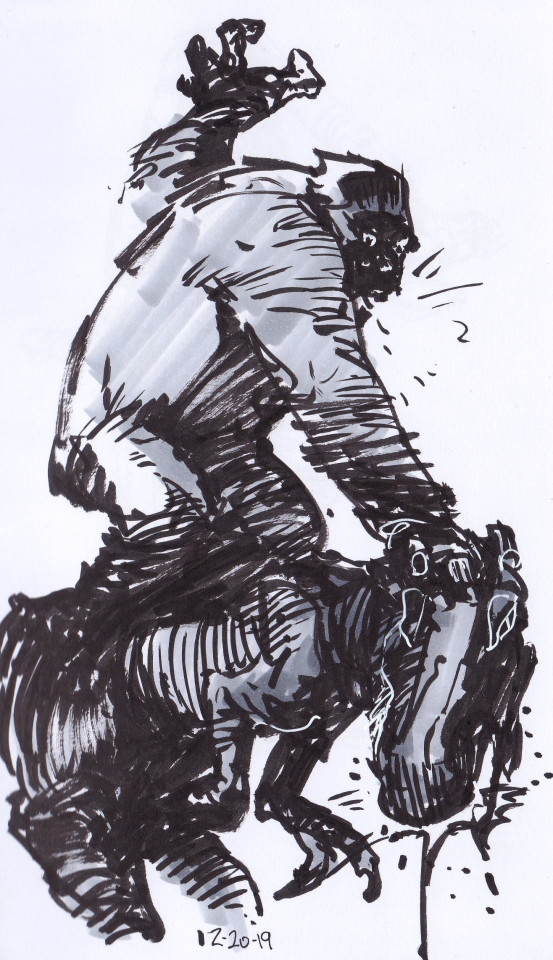
I have a spiral bound sketchbook based on a small hardcover copy of King Kong. The company, Ex Libris Anonymous, offer a variety of old hardcover school texts, children’s books and such, cut off the spine, leaving a smattering of the original content behind, interspersed with decent sketch paper. So I sketched in it today. And here are the results. No pencils, just brush pens.
0 notes
Text
Lesbian Authors
A.J. Adaire
Pat Adams-Wright
Dorothy Allison
S.W. Anderson
Elizabeth Andre
Mavis Applewater
Ann Aptaker
J.A. Armstrong
Michelle Arnold
Clare Ashton
K. Aten
Victoria Avilan
Darla Baker
Roslyn Bane
Ann Bannon
Solia Panche Bealti
Alison Bechdel
Georgia Beers
Sharon Marie Bence
Bridget Birdsall
Harper Bliss
Andrea Bramhall
Jaye Robin Brown
Anna Burke
Amalie Cantor
Brandee Carbo
Suzie Carr
Dawn Carter
C.L. Cattano
Becky Chambers
Kate Charlton
Sharon Cho
Barbara L. Clanton
Hannah Abigail Clarke
Shelby Cochran
Helen Corcoran
Jeanne Córdova
Audrey Coulthurst
Delores Cremm
Maggie Dane
Emily M. Danforth
Sandra de Helen
Barbara Dennis
Nicole Dennis-Benn
Stefani Deoul
K.E. DePalmenary
T.L. Dickerson
Jennifer Diemer
Sarah Diemer *
Jane DiLucchio
J.M. Dragon
Moondancer Drake
K.B. Draper
Cassandra Duffy
A.L. Duncan
Nann Dunne
Sarah Ettritch
Lillian Faderman
Sara Farizan
Leslie Feinberg
Anna Ferrara
Fannie Flagg
Jane Fletcher
Laura Foley
Katherine V. Forrest
Diane Fortier
Giselle Fox
Anna Furtado
Elisa M. Galbreath
Lynn Galli
S.L. Gape
Nancy Garden
Lyn Gardner
S. Anne Gardner
Pauline George
Ana B. Good
Parker Gordon
Erin Gough
Kimberly Cooper Griffin
Nicola Griffith
Agnes H. Hagadus
Anne Hagan
Radclyffe Hall
S.M. Harding
Ellen Hart
Nancy Ann Healy
Fran Heckrotte
Natasja Hellenthal
Dotti Henderson
Claire Highton-Stevenson
Gerri Hill
E.M. Hodge
Dayna Ingram
Isabella
Jae
Adiba Jaigirdar
Jo Jennings
Heather Rose Jones
E.A. Kafkalas
Karin Kallmaker
Riley LaShea
Stacey-Leanne
Lez Lee
Malinda Lo
Ann-Marie MacDonald
Renee MacKenzie
Prudence MacLeod
Lise MacTague
Lucy J. Madison
Rachel Maldonado
Siera Maley
Laurie J. Marks
Julie Maroh
Michelle Marra
Paula Martinac
Arkady Martine
Q.C. Masters
Andi Marquette
Pamela Mauldin
Robbi McCoy
M.K. McGowan
Gill McKnight
Ann McMan
Heather McVea
Mary Meriam
Ronni Meyrick
Martha Miller
Rogena Mitchell-Jones
K.A. Moll
Sallyanne Monti
Annette Mori
Bonnie J. Morris
Jaycie Morrison
Niamh Murphy
Charlene Neil
Natasha Ngan
Nik Nicholson
Baren Nix
Ocean
Paula Offutt
Chinelo Okparanta
Chris Parsons
Angela Peach
Julie Anne Peters
B.J. Phillips
Ashley Quinn
Radclyffe
Cheryl Rainfield
Adan Ramie
Nina Revoyr
Rhavensfyre
Julia Diana Robertson
Nita Round
Morgan Routh
Joanna Russ
Laurie Salzler
Shamim Sarif
Lacey Schmidt
Sarah Schulman
Tina Sears
Cass Sellars
Merry Shannon
Fiona Shaw **
Kaden Shay
Djuna Shellam
Jen Silver
Jennis Slaughter
Adrian J. Smith
E.H. Smith
Vanessa Snyder
Alison R. Solomon
Raven J. Spencer
Ali Spooner
Rose Stone
Carren Strock
Rebecca Sullivan
Leandra Summers
Mariko Tamaki
Michelle L. Teichman
Keira Michelle Telford
Rae Theodore
M.E. Tudor
Vanda
Elle Vaughn
Missouri Vaun
Anastasia Vitsky
Tillie Walden
Sarah Waters
HollyAnne Weaver
Laney Webber
Louise Welsh
Caren J. Werlinger
K.D. Williamson
B.L. Wilson
Catherine M. Wilson
Barbara Winkes
Lee Winter
Jeanette Winterson
Chris Anne Wolfe
T.J. Wolfe
Jacqueline Woodson
Fiona Zedde
Kristen Zimmer
* Also writes under the pen names Elora Bishop and Bridget Essex
** Not to be confused with the Irish actress of the same name
This list is subject to changes. Compiling a list of lesbian authors is a challenge because not all authors are out and my sources of information are limited. I had to rely on finding author bios, interviews, tweets, etc. in which an author mentions her sexual orientation. I also got many of these names from the Lesbian Authors Guild.
#lesbian#authors#writers#lesbian authors#lesbian writers#female authors#female writers#lesbians#long post
25 notes
·
View notes
Text
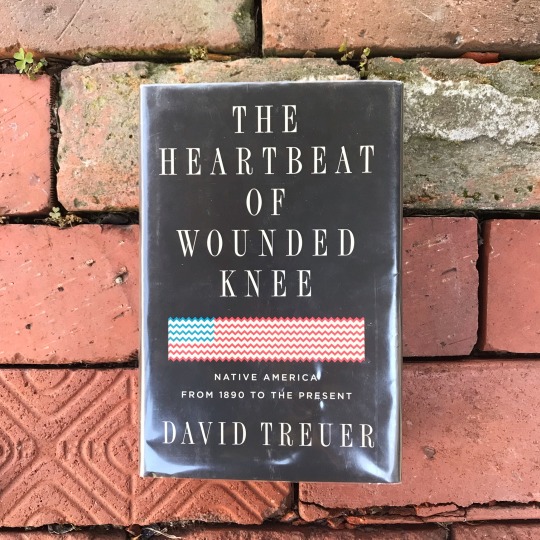
#finishedbooks The Heartbeat of Wounded Knee by David Treuer. Got this from the library on recommendation from @honestannotations after posting the exhaustive US political overview, These Truths, that was deficient in its Native American relations, but by default because its scope. I recall in the late 2000s watching Ken Burns (presents) 'The West' over the course of a week and being physically affected by the documentary that was more or less a prolonged holocaust. The documentary ended right around Wounded Knee at the close of the 19th century that in a way represented the closing of the American frontier. An estimate of the Native American population around 1500 A.D. was anywhere from 8-112 million, but at the close of the 1800s was just over 200,000 given an indication to the degree of genocide. Of which saw the US changing tactics after heavy losses when confronting Indians head on instead by systematically balkanizaing groups through ever broken treaties, chemical warfare, aggressive frontier settlements, and killing off of food supplies. Primary of which, the buffalo went from a population of 60 million to exactly 541 at the end of the century. This is where the book begins written from a Native American perspective through 7 parts. The first part chronicles the history to this point. Part 2 Purgatory:1891-1934 detailing much those boarding schools to kill off culture that Zitkála-Šá described so beautifully. A brief read of the Meriam Report illustrates the socieconmic situation Native Americans faced during this period. Part 3: Fighting Life: 1914-1945 details their confliction and bravery in participating in the World Wars, like the tragedy of Ira Hayes who became eulogized best known in the Johnny Cash rendition of "The Ballad of Ira Hayes." Part 4: Moving on Up- Termination and relocation: 1945-1970 represented the gains in the post-war era, but also further relocation policies by the government. Part 5: Becoming Indian: 1970-1990 coincided with the history revisionism and gains from the civil right movements. In a way the Native American response to the Black power movements AIM was broken by FBI infiltration and subsequent infighting and violence that really ended with the Jumping Bull incident. Part 6: Boom City- Tribal Capitalism in the 21st century goes through the advent of casinos, legalization of marijuana, but also just testing sovereignty laws with tax-free tobacco. The creation of various industries such as leeching were also detailed. Part 7: Digital Indians: 1990-2018 tells of the present and use of the internet and identity politics. Most notable from this period would be the Standing Rock protests against the Dakota Access Pipeline that sought to carry 400,000 barrels if oil a day over Native American water supplies. Genius of this that gained international attention was linking the Native American plight with environmentalism and really the ills of capitalism that saw the company's private security force sicking dogs on the peaceful protestors. Ultimately he illustrates a sea of change in Native American that he stressed did't want to be just a cultural show and tell. Just as much as I educate myself on our struggle for equality, it isn't much without looking at all groups. Always liked what James Baldwin said in his University of Cambridge debate with William F. Buckley about it being a shock to realize the Indian Gary Cooper killing was you. Also loved a painting by Levi that mentions that the cowboys always killed my heroes in movies.
1 note
·
View note
Photo

Paternalism, Colonialism and Indigenous Education
Aboriginal and Torres Strait Islander Australians (”Indigenous” or “First Australians”) have been the traditional custodians of the land of Australia for over 75,000 years and longer by other estimates. According to the 2011 Census, Indigenous Australians make up over three percent of Australia’s national population. The majority of Indigenous Australians have an Aboriginal ancestry (90%), six percent are from Torres Strait Islander ancestry, and the rest are a mix of both Aboriginal and Torres Strait Islander heritage.
Indigenous Australians descend from over 400 documented language and cultural groups. Due to colonialism, 145 languages survive, but only 20 languages are considered “strong” (that is, spoken by all generations).
Pat Dudgeon and colleagues note that, at the time of British invasion in 1788, First Australians’ affinity to the land was strong, as was the complex kinship system that binds all people together and reinforces their spiritual bonds to nature. The colonialists, however, did not recognise the Indigenous custodianship of the land, declaring Australia an uninhabited land (terra nullius) and launched a violent campaign that decimated the Indigenous population and imposed a campaign of cultural genocide.
Paternalistic violence
Dudgeon and colleagues chronicle that in 1883, New South Wales established the Aboriginal Protection Board. The Board later enacted the Aborigines Protection Act in 1909 which granted the state the power to confine Indigenous people in missions and reserves. Other states followed with similar Boards and legislation that imposed British culture and Christianity, stripping children of access to their land, culture and Indigenous languages. Indigenous people began to be classified under a legally imposed racial system. Using social Darwinism, the state ranked children according to whether they were to be considered “full blood,” “half-caste” and so on, using this system to remove children from their families. At its heart, this legal caste system reflected the social and scientific view that Indigenous Australians were somehow lesser in their humanity than the European invaders.
Indigenous resistance movements fought against colonialism throughout this period. Dudgeon and colleagues note several significant incidents of frontier warfare; the activism of William Cooper and the Australian Aborigines League and William Ferguson’s leadership of the Aborigines Progressive Association both in the 1920s; and a maritime strike in 1936. The latter contributed to the rise of the Island Councillors meeting and the revised Aboriginal Protection Act of 1939 which provided Islanders greater authority.
Human rights
While other Australians had the right to vote federally in 1902, Indigenous women did not get the right to vote until 1962, except enrolling to vote was still optional despite it being compulsory for other Australians. (Though some individual Indigenous people lobbied and voted in protest as far back as the 1890s.) The 1967 Commonwealth Referendum finally granted Indigenous Australians full citizenship. The landmark native title case in 1992 led by Eddie Mabo affirmed the Meriam people ownership of their land.
Despite these advances, the legal, cultural, social, psychological, and health damage suffered under colonialism continues to the present day.
The forced removal of Indigenous children meant that families were not only separated, but children were put into institutions that had sub-standard health and educational access. This history explains the connection between socio-economics, health and institutional racism. That is, discrimination through official social policy and the practices of other social organisations.
Health and Education
The Council of Australian Governments (CoAG) released a report in June 2013 which finds a set of mixed health and socio-economic outcomes amongst Indigenous Australians. Death amongst Indigenous children has been decreasing (to 5.7 deaths per 100 000 annually), but Indigenous adults still die at twice the rate of other Australians.
Indigenous completion rates of high school (to Year 12 or equivalent) has risen from 47% in 2006 to 54% in 2011, however in the Northern Territory high school completion is lower by almost 7 percentage points. Most of the Territory is categorised as a very remote region. There are also mixed results for literacy. Reading levels have improved amongst Indigenous children in Years 3 to 7, but numeracy has decreased since 2008. The opposite trend is found amongst older Indigenous students in Year 9. While post-school qualifications have been improving for the rest of Australia, amongst Indigenous people, there has been little improvement.
Only 55 percent of Indigenous children in the Northern Territory are still in school by Year 10. This is the lowest rate of educational retention in Australia in the one area that has the highest proportion of Indigenous people (30% of the local population).
One of the Government proposals to improve literacy and school retention is sending Indigenous children to boarding schools. If this is a local facility that does not take children too far from their local communities, this may possible be workable if approved by families, however, at its heart, this idea of removal of children has troubling undertones mired by Australia’s colonial history.
Bruce Wilson, chair of review into Indigenous education system for the Northern Territory Government, says that educational facilities and administration of the curriculum is substandard in the Territory. Teachers are not adequately trained and children are not motivated to stay at school. The solution, to send children away to boarding schools, is seen as a means to improve student attrition. The premise, however, gives up on improving teacher training and infrastructure. Wilson says that the goal is to entice children to remain at school and to stay connected to their communities:
Young people need continuing contact with their culture, with their language, with their families and communities.
To learn more about other Indigenous-driven initiatives to enhance education, head to my blog, The Other Sociologist.
[Photo: People gather at an Indigenous stall at a Survival Day event, with the Aboriginal flag in prominent display.]
#indigenous australians#indigenous#sociology#social science#education#postcolonialism#colonialism#language#culture#youth#northern territory#australia#paternalism#racism#violence#zee sociology
6 notes
·
View notes
Text
Advocacies or projects include but are not limited to:
Anti Drug Campaigns
This campaign was created by the National Youth Anti-Drug Media Campaign to equip parents and other adult caregivers with the tools they need to raise drug-free kids. The U.S. government has worked with the White House Office of National Drug Control Policy’s National Youth Anti Drug Media Campaign to put forward a new focus on anti drug campaigns.
Since 1998, the U.S government has spent more than one billion dollars on nationwide campaigns against drug use. This active campaign against substance abuse is a ‘war’ that has waged on since the early 1980s. Year after year, campaigns have directly targeted the youth to stop using marijuana and other substances for recreational purposes.
Youth Election Volunteer Mobilization
The purpose of Youth Election Volunteer Mobilization is to encourage the youth to help our community, there are many opportunities for youth to encounter because the youth has the ability to drive an economy forward and hence investing in the health, education and
safety of young people would improve future productivity and economic returns.
The vision of the Youth Election Volunteer Mobilization is to pomote peace through mutual respect, understanding, and cooperation —one individual, one community at a time.
And their Goals and Objectives is to touch the lives of the youth, so the youth can touch the world. Make a difference and give the youth a chance to prosper and rise against all hindrances. Give the youth a stage to voice out what they wanted to share to the world.
Animal Rights and Welfare
The relationship of animals and humans has been the subject of differing philosophical views for thousands of years. The controversy continues today in many aspects of contemporary life. Some people believe that a vegan lifestyle is the only moral choice. Others believe that humans should treat animals "humanely," but can use animals and animal products at will, including for biomedical or other scientific research. Others believe that humans have no moral responsibilities for animals and are free to treat animals as they want.
Advocates of animal rights believe that animals have legal rights and are members of the moral community. As such, animals should not be used by humans for any purpose. Advocates of animal welfare believe that non-human animals should be treated humanely and without unnecessary suffering, but otherwise are available for humans to use for food, clothing, research, and entertainment.
Environmental conservation and action
The main objective of the conservation action is to maintain the essential biological and ecological processes, preserving the genetic diversity, as well as the sustainable use of species and the ecosystem in general.
Within conservation activities, protection and restoration of endangered species are included; the careful use and recycling of scarce resources and minerals; rational use of energy, sustainable land use, among others.
“Environmental Action” means any action, suit, demand, demand letter, claim, notice of non- compliance or violation, notice of liability or potential liability, investigation, proceeding, consent order or consent agreement relating in any way to any Environmental Law, Environmental Permit or Hazardous Materials or arising from alleged injury or threat of injury to health, safety or the environment, including, without limitation.
Contemporary ICT issues such as:
Cyberbullying
One of the effects of ICT in our community is the Cyberbullying. What is cyberbullying?
According to Meriam Dictionary, “Cyber” means “of relating to, or involving computers or computer networks (such as the Internet)” and “Bullying” on the other hand is “an abuse and mistreatment of someone vulnerable by someone stronger, more powerful, etc. or the actions and behavior of a bully.”
In short, cyberbullying simply means bullying through the internet. This is considered a crime and there are laws in some countries that prohibit this act.
Copyright Infringement
“Copyright infringement is the violation, piracy or theft of a copyright holder’s exclusive rights through the unauthorized use of a copyrighted material or work, per the federal U.S. Copyright Act. Copyright infringement is also known as an infringement of copyright.
In the context of copyright infringement, an unauthorized use of a work or material is any unauthorized reproduction, distribution, performance, public display or transfer to a derivative work without the copyright owner’s permission.
Green technology
Green technology, also known as sustainable technology, takes into account the long- and short-term impact something has on the environment. Green products are by definition, environmentally friendly. Energy efficiency, recycling, health and safety concerns, renewable resources, and more all go into the making of a green product or technology.
Internet addiction
Internet addiction is described as an impulse control disorder, which does not involve use of an intoxicating drug and is very similar to pathological gambling. Some Internet users may develop an emotional attachment to on-line friends and activities they create on their computer screens. Internet users may enjoy aspects of the Internet that allow them to meet, socialize, and exchange ideas through the use of chat rooms, social networking websites, or "virtual communities."
My Reflection:
In Advocacy it focuses to the importance of the different problems and safety in society from different circumstances, they ensure that people, particularly those who are most vulnerable in society are able to defend and safeguard their rights. Advocacy support and enabling people to Express their concerns, Access information and services and Defend and promote their rights and responsibilities.
Then in Contemporary ICT issues, we all know that ICT is very useful in many ways and we can't deny the fact that it greatly affect our daily life, like routines, attitude as well our culture. ICT is can be Advantages and Disadvantages to our life because ICT helps us in many ways but also it can be the reason why our culture becomes more horrible because now, many people especially teenagers are attached to their gadgets and tends to do a worse or bad thing using technology.
0 notes
Text
Best Case Analysis for all the Business Case Studies exclusively on writerkingdom.com written by CFA-MBA-ACCA writers
Simply put us an email at [email protected] or visit http://writerkingdom.com/make-an-order-with-writerkingdom/ to make an order with writerkingdom for listed below or any of your assignment Problems that can be case studies, report writing, research essay, final exam, dissertation, Thesis or any other assignment. Only on writerkingdom.com
Solved Case Analysis: CIRQUE DU SOLEIL Thomas J DeLong Vineeta Vijayaraghavan
Solved Case Analysis: CISCO SYSTEMS INC. MANAGING CORPORATE GROWTH USING AN INTRANET Michael Parent Debra Ran
Solved Case Analysis: Cisco Systems New Millennium New Acquisition Strategy Portuguese by Nir Brueller Laurence Capron
Solved Case Analysis: CISCO SYSTEMS INC IMPLEMENTING ERP
Solved Case Analysis: CITIBANK PERFORMANCE EVALUATION By Robert L Simons Antonio Davila
Solved Case Analysis: Citibank Card Product Group Mark Eaker Andrew C.Boynton
Solved Case Analysis: CITIBANK PERFORMANCE EVALUATION Robert L Simons and Antonio Davila
Solved Case Analysis: Citigroup Inc. Accounting for Loan Loss Reserves by Jacob Cohen David Hawkin Gerald J. Lobo
Solved Case Analysis: Citigroups Exchange Offer C By Robin Greenwood James Quinn
Solved Case Analysis: CitiusNet The Emergence of a Global Electronic Market by Tawfik Jelassi Han Sheong Lai
Solved Case Analysis: Clare College Seeking Investment Opportunity in a Financial Crisis By David Chambers Elroy Dimson Luis M. Viceira
Solved Case Analysis: Claritas Genomics Robert F. Higgins Matthew Preble
Solved Case Analysis: Clarkson Lumber Co. Thomas R. Piper
Solved Case Analysis: CLASSIC PEN COMPANY DEVELOPING AN ABC MODEL By Robert S Kaplan
Solved Case Analysis: Clean Edge Razor Splitting Hairs in Product Positioning John A. Quelch Heather Beckham
Solved Case Analysis: Clean Coal in the U.S and China An Industry Note Robert A.Burgelman Andrew S.Grove Debra Schifrin
Solved Case Analysis: CleanSpritz John A. Quelch and Alisa Zalosh
Solved Case Analysis: CLEANSPRITZ John A Quelch Alisa Zalosh
Solved Case Analysis: Cleveland Clinic Transformation and Growth 2015 Michael E. Porter Elizabeth Olmsted Teisberg
Solved Case Analysis: Cleveland Turnaround B Building on Progress 1989 96 James E.Austin Andrea L.Strimling
Solved Case Analysis: Club Med Japan by Hellmut Schutte
Solved Case Analysis: CO2 Australia The Case for Carbon Credits by George Allayannis Susheel Tenguria
Solved Case Analysis: Coca Cola Residual Income Valuation Suraj Srinivasan Beiting Cheng Edward J. Riedl
Solved Case Analysis: Coke vs. Pepsi 2001 By Robert F. Bruner Jessica Chan
Solved Case Analysis: COLA WARS IN CHINA THE FUTURE IS HERE Niraj Dawar Nancy Dai
Solved Case Analysis: COLA WARS CONTINUE COKE AND PEPSI IN 2010 David B Yoffie Renee Kim
Solved Case Analysis: Cola Wars Continue Coke vs Pepsi in the 1990s David B Yoffie Sharon Foley
Solved Case Analysis: Cola Wars Continue Coke vs Pepsi in the Twenty First Century David B.Yoffie Yusi Wang
Solved Case Analysis: Colgate Palmolive France A by Reinhard Angelmar Francois Canivet
Solved Case Analysis: Colgate Palmolive France B by Reinhard Angelmar Francois Canivet
Solved Case Analysis: Colgate Palmolive France C by Reinhard Angelmar Francois Canivet
Solved Case Analysis: Colt Industries By Robert M. Conroy
Solved Case Analysis: Columbias Final Mission Amy C. Edmondson Kerry Herman
Solved Case Analysis: Comerica Incorporated The Valuation Dilemma by George Allayannis Baijnath Ramraika
Solved Case Analysis: Comerica Incorporated The Valuation Dilemma By Yiorgos Allayannis Baijnath Ramraika
Solved Case Analysis: Coming Era of Brand in the Hand Marketing Fareena Sultan Andrew Rohm
Solved Case Analysis: COMMERCE BANK By Frances X Frei Corey Hajim
Solved Case Analysis: Commerce Bank Frances X. Frei Corey Hajim
Solved Case Analysis: Communispace Anat Keinan
Solved Case Analysis: Compagnie du Froid S. A Robert L. Simons Antonio Davila
Solved Case Analysis: Compagnie Lyonnaise de Transport Michael J. Roberts Michael L. Tushman
Solved Case Analysis: Company Analysis for Danone Harvard and Iveys
Solved Case Analysis: Compass Box Whisky Company By Romana L. Autrey Devin Shanthikumar
Solved Case Analysis: Compass Records
Solved Case Analysis: Competing through EDI at Papeteries Brun Passot Making Paper Passe by Tawfik Jelassi
Solved Case Analysis: Compte Nickel Creating New Demand in the Retail Banking Sector by W. Chan Kim Renee Mauborgne Melanie Pipino
Solved Case Analysis: Computer Reservation Systems An Industry of Its Own Ali F.Farhoomand Andrew Lee
Solved Case Analysis: CONFLICT ON A TRADING FLOOR A By Joseph L Badaracco Jerry Useem
Solved Case Analysis: Conflict on a Trading Floor A by Joseph L. Badaracco Jr. and Jerry Useem Harvard Business School
Solved Case Analysis: CONTINENTAL REALTY LIMITED J. Nick Fry Randy Pepper
Solved Case Analysis: Continental Tires and the Global Tire Industry in 2016 by Karel Cool Laurent De Clara
Solved Case Analysis: Continuous Casting Investments at USX Corp. Clayton M. Christensen
Solved Case Analysis: Cooper Industries Inc. Thomas R. Piper
Solved Case Analysis: Cooper Industries Corporate Strategy A David J.Collis Toby Stuart
Solved Case Analysis: CornerStone Partners by Richard B. Evans Prakash Menon
Solved Case Analysis: Corning Inc. Zero Coupon Convertible Debentures Due November 8 2015 A By Robert F. Bruner Jessica Chan Sean Carr
Solved Case Analysis: Coronet Savings and Loan
Solved Case Analysis: Corporate Governance in Three Economies Germany Japan and the United States By Robert M. Conroy
Solved Case Analysis: Corporate Valuation and Market Multiples Timothy A. Luehrman
Solved Case Analysis: Cost of Capital at Ameritrade Mark Mitchell Erik Stafford
Solved Case Analysis: Costco Wholesale Corp. Financial Statement Analysis Maureen McNichols Brian Tayan
Solved Case Analysis: Costing Systems by G. Deigan Morris
Solved Case Analysis: Coursera Ramon Casadesus Masanell Hyunjin Kim
Solved Case Analysis: Cox Communications Inc. 1999 George Chacko Peter Tufano
Solved Case Analysis: Creating a Marketing Plan An Overview
Solved Case Analysis: Creating a Process Oriented Enterprise at Pinnacle West T.S. Raghu
Solved Case Analysis: Creating Cultural Change in a Swedish Hungarian Joint Venture by Susan C Schneider
Solved Case Analysis: Credit Default Swaps on AMR Corporation Cash or Credit by Pedro Matos Peter Lee
Solved Case Analysis: Credit Unions The Future of the Cooperative Financial Institution Robert C. Pozen Grace Hou
Solved Case Analysis: CRESCENT PURE Best John A Quelch Alisa Zalosh
Solved Case Analysis: Crestor Tim Calkins Joshua Neiman
Solved Case Analysis: Cresud S.A Farmer or Real Estate Developer Ray A Goldberg Arthur I Segel Gustavo A Herrero Andrew Terris
Solved Case Analysis: Crisis at the Mill Weaving an Indian Turnaround Alvarez & Marsal by Claudia Zeisberger Anne Marie Carrick Sankar Krishnan Nikhil Shah
Solved Case Analysis: CRM IMPLEMENTATION FAILURE AT CIGNA CORPORATION By Vivek Gupta M Vinaya Kumar
Solved Case Analysis: Crocs Inc. by Marc L. Lipson Gaurav Gupta
Solved Case Analysis: CROWDFUNDING AT THE BROOKLYN WAREHOUSE Nicola Young Karen Lightstone
Solved Case Analysis: Crown Cork & Seal in 1989 Stephen P.Bradley Sheila Cavanaugh
Solved Case Analysis: CRP PRODUCTS David Wood Robert Klassen
Solved Case Analysis: CULTURE AND LEADERSHIP AT IBM By John Weeks
Solved Case Analysis: CUMBERLAND ENTERTAINMENT A EXPANDING WITH PRIVATE EQUITY By Christoph Zott Abigail Leland
Solved Case Analysis: Currency Crisis in the United Kingdom and Hong Kong by Francis E. Warnock
Solved Case Analysis: Customer Profitability Analysis and Value Based Management at Barclays Bank by Regine Slagmulder Jaeita Mukherjee
Solved Case Analysis: Cutting through the Fog Finding a Future with Fintech by George Allayannis Kayla Cartwright
Solved Case Analysis: CVS Jon Roberts and Josh Flum Video
Solved Case Analysis: Cypress Semiconductor 1.25 Convertible Notes by Robert M. Conroy
Solved Case Analysis: Cypress Semiconductor 1.25 Percent Convertible Notes By Robert M. Conroy
Solved Case Analysis: Dana Hall Funding a Mission F. Warren McFarlan Herman B. Leonard Melissa Tritter
Solved Case Analysis: Danaher Corporation The Hach SL1000 Portable Parallel Water Analyzer by Marc L. Lipson
Solved Case Analysis: Danfoss RC in China A Going Global by Jonathan Story Natasha Lee Evans
Solved Case Analysis: Daniel Dobbins Distillery Inc.William J. Bruns Jr.
Solved Case Analysis: Danville Airlines Andrew Wicks Jenny Mead
Solved Case Analysis: Dardens Luckiest Student 2008 by Phillip E. Pfeifer Samuel E. Bodily
Solved Case Analysis: Dashman Co. Richard S. Meriam Franklin E. Folts George F.F. Lombard
Solved Case Analysis: DAVE ARMSTRONG A George Wu
0 notes
Text
Kemitraan Produktif Indonesia-Turki
Hubungan Indonesia-Turki bukanlah hubungan yang baru. Karena dalam catatan sejarah kedua bangsa telah saling berinteraksi sejak abad ke-12. Bahkan beberapa wali sanga yang merupakan penyebar agama Islam di pulau jawa pada abad 15 dipercaya merupakan utusan sultan Muhammad I dari dinasti Turki Utsmani. Hubungan Indonesia-Turki telah banyak memberikan manfaat bagi bangsa ini. Seperti kita ketahui bahwa pada abad ke-16 kesultanan Aceh yang pada saat itu sedang menghadapi serangan Portugis mendapat bantuan dari Turki Utsmani berupa “Transfer of Technology (ToT) pembuatan meriam. Maka sejak itu lah kesultanan Aceh menguasai teknologi pembuatan meriam, yang selanjutnya digunakan untuk melawan Portugis di selat Malaka.
Lima abad kemudian, Turki masih menawarkan kerjasama yang menarik bagi Indonesia. Di era pemerintahan SBY, telah banyak kerjasama yang dilakukan antar kedua negara. Dan di era pemerintahan Jokowi kerjasama itu berlanjut. Seperti kita ketahui baru saja Presiden kita mengunjungi negara 2 benua tersebut untuk membahas beberapa hal, utamanya tentang kerjasama kedua negara. Dibandingkan dengan kerjasama dengan negara-negara lain, kerjasama Indonesia-Turki menjadi lebih menarik, bukan karena nilai investasi yang paling besar melainkan sifatnya yang sangat produktif.
Turki tidak ingin menawarkan kerjasama “pepesan kosong”. Kerja sama yang ditawarkan bukan hanya sekedar pemanis diplomatis, tapi lebih dari itu Turki menawarkan banyak manfaat untuk Indonesia lewat “Joint Production” ataupun “Joint Development”. Dengan skema semacam ini maka investasi bukan semata mengeruk keuntungan di Indonesia lalu di bawa ke luar negeri. Tapi Indonesia juga akan merasakan manfaat dari kerjasama yang dilakukan berupa penguasaan teknologi, keuntungan pemasaran dan lain-lain.
Menteri Luar Negeri Retno LP Marsudi setuju bahwa kerjasama Indonesia-Turki itu lebih konkret. Sederet kemitraan khususnya di bidang industri strategis sudah mulai terealisasi, lihat saja dalam hal pengembangan power ship atau kapal pemasok listrik antara PT PAL dengan Karadeniz Holding yang sudah membangun 4 “power ship” pertamanya dengan kapasitas 36-80 MW. Kerja sama ini memungkinkan terpenuhi pasokan listrik di wilayah-wilayah “byar pet” di Tanah Air. Lebih jauh lagi, Indonesia dengan Turki juga sudah memiliki “agreement on defense industry cooperation” sejak 2010. Dan pada saat 2015 kita sudah ada kerja sama komunikasi pertahanan HF Software Defined Radio, antara PT LEN dengan Aselsan Turkish, Alat itu untuk memenuhi kebutuhan peralatan komunikasi terutama di wilayah-wilayah perbatasan. Selain itu, ada kerja sama antara PT Pindad dengan FNNS untuk joint development dan production tank medium modern dengan kapasitas 30 ton. Sebuah tank tempur skala menengah yang sudah mulai dikerjakan oleh kedua perusahaan, bahkan telah diluncurkan pada Mei 2017. Prototipe-nya akan didemonstrasikan pada saat HUT TNI, Oktober 2017 nanti. Kerja sama joint development antara PT Dirgantara Indonesia dengan Turkish Aerospace Industries untuk pengembangan pesawat CN generasi terbaru menambah daftar panjang, yang membuktikan nyatanya kerja sama yang ingin diwujudkan Turki dengan Indonesia. Ke depan masih banyak peluang kerjasama yang terbuka seperti pembangunan kapal selam tipe 214, industri otomotif dan lain-lain.
Hal yang mungkin masih harus dibenahi oleh pemerintah adalah hambatan-hambatan yang saat ini menyebabkan masih kecilnya volume ekspor-impor Indonesia-Turki. Hambatan itu bisa berupa tarif atau bea masuk beberapa komoditas strategis. Dengan dihilangkannya hambatan-hambatan tersebut diharapkan laju kerjasama antara Indonesia dengan Turki akan semakin meningkat dan tentu semakin banyak pula manfaat yang akan dipetik oleh Indonesia.
0 notes